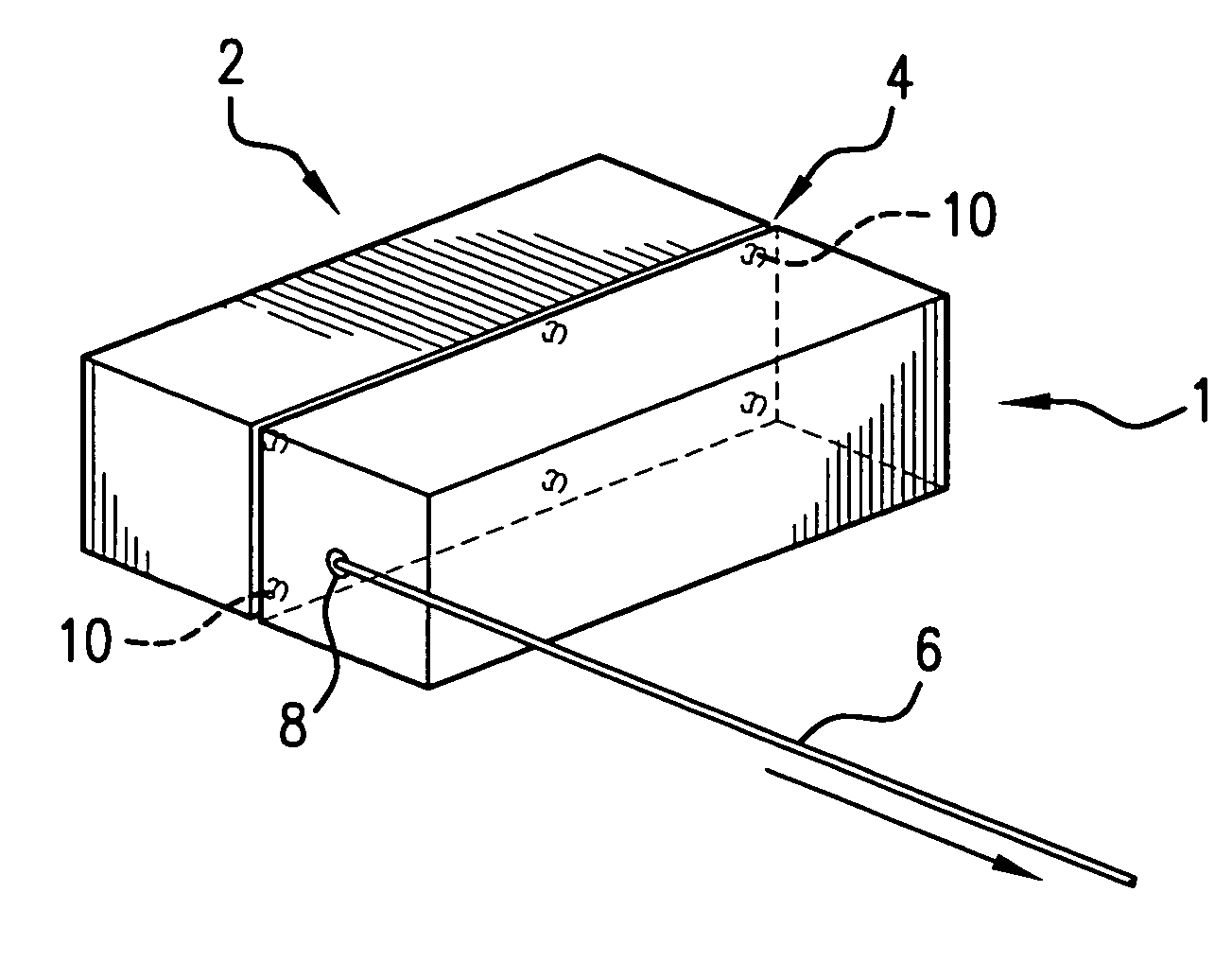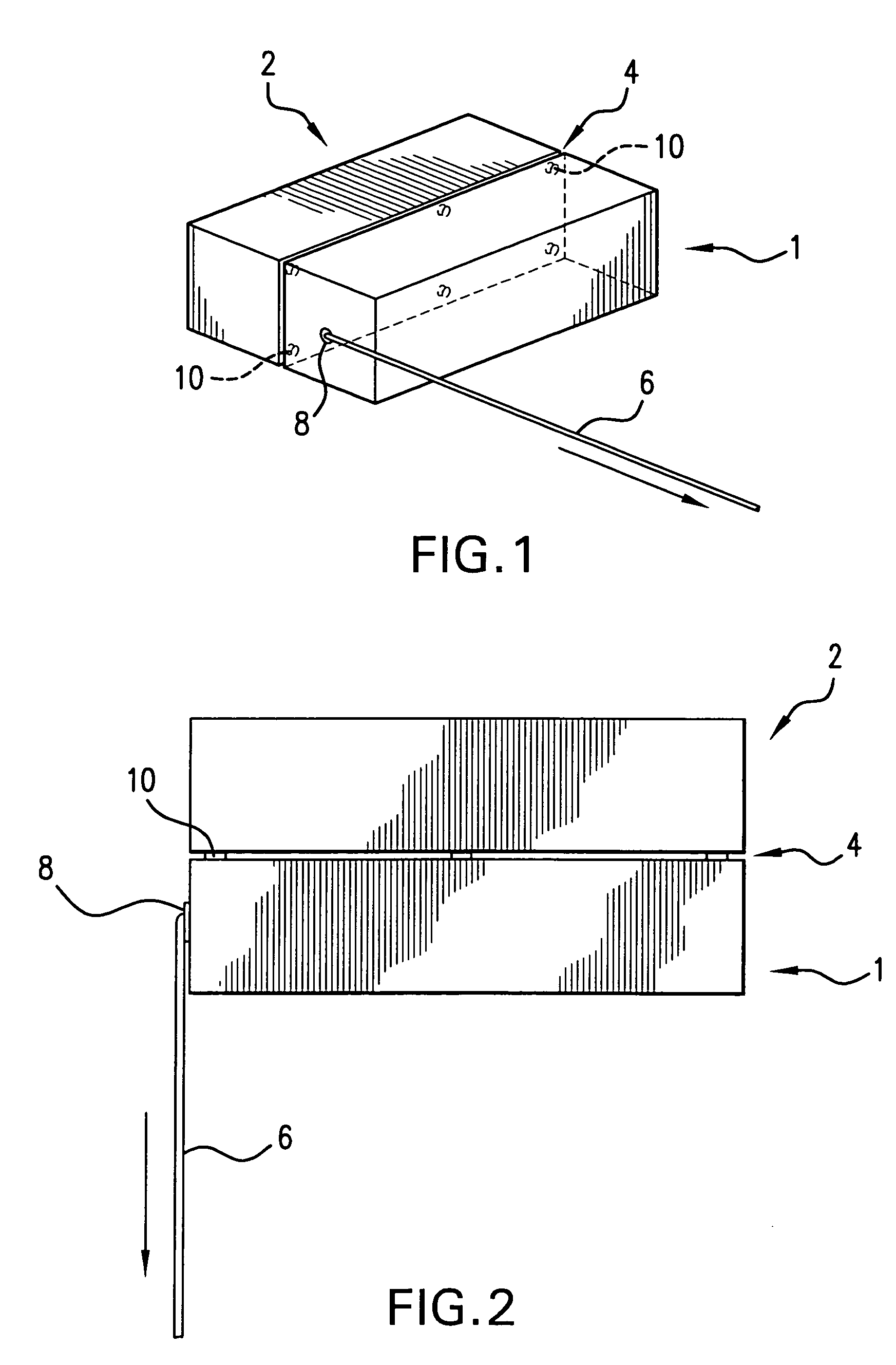Composition and method relating to a hot melt adhesive
a technology of hot melt adhesives and compositions, applied in the direction of wax adhesives, rosin adhesives, layered products, etc., can solve the problems of tearing and/or destruction of one or both substrates, lack of initial adhesion necessary to be useful for many applications, and aesthetically undesirable residual hot melt on the substrates
- Summary
- Abstract
- Description
- Claims
- Application Information
AI Technical Summary
Benefits of technology
Problems solved by technology
Method used
Image
Examples
Embodiment Construction
[0008] The methods and compositions of the present invention are directed to a hot melt adhesive that initially exhibits adhesion qualities and subsequently exhibits non-adhesion qualities. More particularly, the adhesives of the present invention uniquely and unexpectedly undergo the following type of property changes sequentially: The adhesive as initially applied typically has little bond strength (e.g. will fail a Separation Resistance Test initially.) At about the “Set Time”, a bond has formed (e.g. will pass a Separation Resistance Test at 10 seconds.) The bond then holds its integrity for a period of time (e.g. will pass the Separation Resistance Test for a period of time after 10 seconds). The adhesive then looses its adhesive qualities (e.g. will have no Fiber Tear). It is often beneficial for the adhesives to be non-tacky at this point.
[0009] These adhesives are thus useful in various applications, including palletizing and any other short-term temporary bonding applicati...
PUM
| Property | Measurement | Unit |
|---|---|---|
| Fraction | aaaaa | aaaaa |
| Time | aaaaa | aaaaa |
| Time | aaaaa | aaaaa |
Abstract
Description
Claims
Application Information
 Login to View More
Login to View More - R&D
- Intellectual Property
- Life Sciences
- Materials
- Tech Scout
- Unparalleled Data Quality
- Higher Quality Content
- 60% Fewer Hallucinations
Browse by: Latest US Patents, China's latest patents, Technical Efficacy Thesaurus, Application Domain, Technology Topic, Popular Technical Reports.
© 2025 PatSnap. All rights reserved.Legal|Privacy policy|Modern Slavery Act Transparency Statement|Sitemap|About US| Contact US: help@patsnap.com


